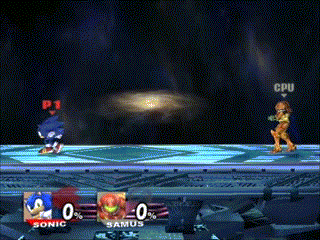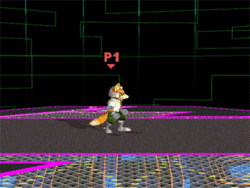Dash-dance: Difference between revisions
Bowserkoopa (talk | contribs) No edit summary |
Bowserkoopa (talk | contribs) |
||
| Line 10: | Line 10: | ||
In ''Brawl'', dash dancing is drastically harder because the initial dash animation is much shorter. In addition, many throws have increased in knockback and decreased in [[hitstun]], making [[tech-chasing]] much more difficult. Also, the [[tripping]] mechanic can interrupt it at a completely random moment, leaving the player vulnerable. As a result, dash dancing is much less useful than it was in Melee and therefore sees little use in competitive play except perhaps in {{SSBB|Sonic}}'s [[metagame]], which relies heavily on mindgames and [[punishment]] to garner KOs. | In ''Brawl'', dash dancing is drastically harder because the initial dash animation is much shorter. In addition, many throws have increased in knockback and decreased in [[hitstun]], making [[tech-chasing]] much more difficult. Also, the [[tripping]] mechanic can interrupt it at a completely random moment, leaving the player vulnerable. As a result, dash dancing is much less useful than it was in Melee and therefore sees little use in competitive play except perhaps in {{SSBB|Sonic}}'s [[metagame]], which relies heavily on mindgames and [[punishment]] to garner KOs. | ||
In [[Super Smash Bros. 4]], the removal of tripping allows safer dash dances than in Brawl. However, the input must now be performed quickly or else the player will simply enter the turning around animation. | In ''[[Super Smash Bros. 4]]'', the removal of tripping allows safer dash dances than in Brawl. However, the input must now be performed quickly or else the player will simply enter the turning around animation. | ||
==Related topics== | ==Related topics== | ||
Revision as of 16:51, November 28, 2014
Dash-dancing is performed by tapping the analog stick left and right rapidly while on the ground, effectively dashing to the left and to the right alternately. Characters can turn around while avoiding the dash's turnaround animation at the beginning of their dash. The maximum time a character can dash in one direction and still change direction by dash dancing is the same as the number of frames in his/her initial dash animation - after this animation is over, the character will enter a turnaround animation in which no attacks can be performed.

Competitive uses
Characters with long and fast dashing animations, namely Fox, Marth, and Captain Falcon make the most use of the technique. In Melee, dash dancing is used primarily to play mindgames with the opponent. By continuously switching directions, the player can make prediction quite a chore for the opponent. Dash dancing can be used in conjunction with throws with low knockback to tech chase. Dash dancing is a also good fake out technique. Players can dash towards opponent and during mid-dash, start to dash dance. This can be used to lure attacks out from the opponent, which can easily be punished during their end lag. Dash dancing can also be jumped out of, allowing players immediate use of SHFFLs and wavedashing.
In Brawl, dash dancing is drastically harder because the initial dash animation is much shorter. In addition, many throws have increased in knockback and decreased in hitstun, making tech-chasing much more difficult. Also, the tripping mechanic can interrupt it at a completely random moment, leaving the player vulnerable. As a result, dash dancing is much less useful than it was in Melee and therefore sees little use in competitive play except perhaps in Sonic's metagame, which relies heavily on mindgames and punishment to garner KOs.
In Super Smash Bros. 4, the removal of tripping allows safer dash dances than in Brawl. However, the input must now be performed quickly or else the player will simply enter the turning around animation.
